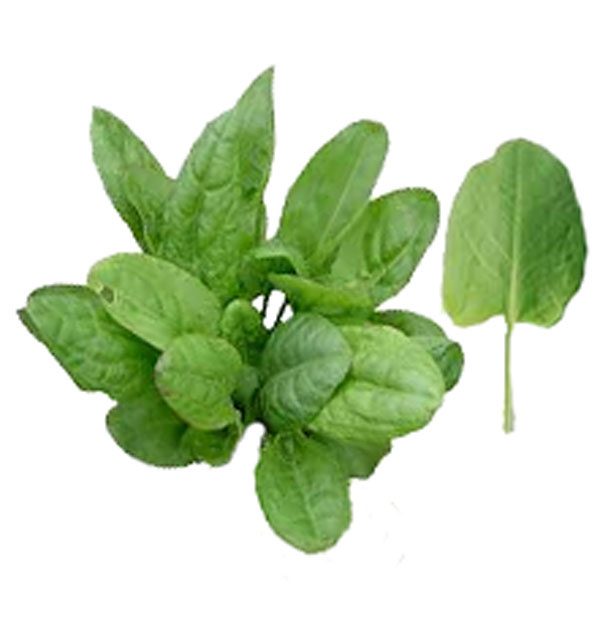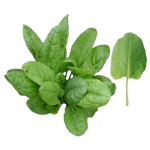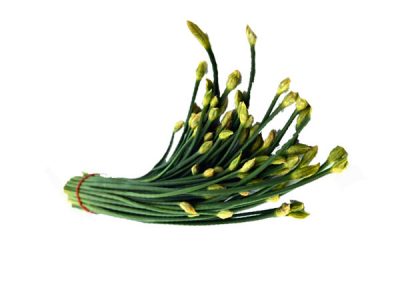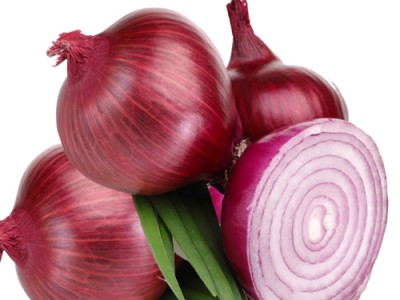

French Sorrel Health Benefits , Nutrition Know How
About French Sorrel
Scientifically known as Rumex scutatus, French sorrel is leafy vegetable that is also used as a herb. It belongs the family of polygonaceae and Genus of rumex ; it is also planted as a pot herb. This leafy vegetable derived its name from a French name ‘surele’ which also means sour in English. Its common names include buckler sorrel, shield-leaf sorrel, and sometimes the culinary name “green-sauce”. Sorrel is not a major part of the American cooking but it plays a major role in French cuisine; Egyptians, Greek and Romans also use this herb abundantly in their cooking. The French sorrel is a herb cultivated commonly in northern America but failed to gain importance. It is a perennial that grows the male and the female parts separately which means is dioecious in nature and it grows up to 2-3 feet high. French sorrel taste a little less acidic when compared to the other sorrels that are cultivated such as garden sorrel, rumex scorrel , spinach dock etc. Sorrels resemble spinach in appearance; has a heart shaped leaves that grow 18 inches long and a purple hermaphrodite flower that adorns the plant.
Sorrel Nutrition Facts
- Provide good source of vitamin A and vitamin C.
- Sorrel leaves are Rich in Antioxidants.
- Help to fight premature aging.
- Fresh Sorrel leaves have diuretic and blood cleansing properties.
Sorrel Benefits
- Prevent diarrhea and constipation.
- Prevent numerous diseases like cancer, diabetes, heart disease and hypertension.
- Raw Sorrel cures hemorrhages, chronic catarrh, gonorrhoea, urinary infections and scurvy.
- Dried Sorrel leaves are used for the treatment of seasonal fever, itchy skin, and ringworm.
- Consume regularly to get rid of jaundice and kidney stones.
- Extracted juice can be applied to boils, malignant tumors, and indolent ulcers.
- Cure inflammatory and scorbutic diseases.
Sorrel is herb not liked by many has a high nutrition value and is a must add on to every ones diet. It is a rich source of vitamin C; sorrel takes charge of the bone health of the body. Sorrel is also recommended for good eye sight as it is a good source of vitamin A that aids clear and healthy vision. Rich in iron this leafy vegetable helps in blood formation and also increases immunity of the body. Sorrel is a key ingredient in treating cancer in a herbal way known as Essiac.
Sorrel leaves are known for the medicinal properties; used to reduce body temperature during fevers to treating disease like scurvy sorrel treats it all in a natural way.
Apart from the fact that sorrels are nutritious and tasty too one needs to understand that sorrels contain a high amount of oxalic acid which is not recommended for people who are diagnosed with kidney problems as it may worsen the existing situation. Food rich in oxalic acids is also diuretic in nature an overdose of it may lead to excessive excretion depriving the body of its healthy nutrients. Tea prepared of sorrel leaves leads to gastric disorders. One needs to consult a doctor before adding sorrels in their daily diet.
How To Enjoy Sorrels
| Principle | Nutrient Value | Percentage of RDA |
|---|---|---|
| Energy | 22 Kcal | 1% |
| Carbohydrates | 3.20 g | 2.50% |
| Protein | 2.00 g | 3.50% |
| Total Fat | 0.7 g | 3% |
| Cholesterol | 0 mg | 0% |
| Dietary Fiber | 2.9 g | 7.50% |
| Vitamins | ||
| Folates | 13 µg | 4% |
| Niacin | 0.500 mg | 3% |
| Pantothenic acid | 0.041 mg | 1% |
| Pyridoxine | 0.122 mg | 9% |
| Riboflavin | 0.100 mg | 8% |
| Thiamin | 0.040 mg | 3% |
| Vitamin A | 4000 IU | 133% |
| Vitamin C | 48 mg | 80% |
| Electrolytes | ||
| Sodium | 4 mg | 1% |
| Potassium | 390 mg | 8% |
| Minerals | ||
| Calcium | 44 mg | 4% |
| Copper | 0.131 mg | 14% |
| Iron | 2.40 mg | 30% |
| Magnesium | 103 mg | 26% |
| Manganese | 0.349 mg | 21% |
| Zinc | 0.20 mg | 2% |
| Phyto-nutrients | ||
| Kaempferol | 10.3 mg | — |
| Myrcetin | 5.7 mg | — |
| Quercetin | 86.2 µg | — |
Sorrels can be eaten raw like spinach or lettuce as a part of salads, can be added in sandwiches, pureed into a thick nutritious soup. Sorrels go best with fish and sea food because it balances the taste with its acidity. It can be added to quiche or made lasagne layers using sorrel leaves. Sauce made for fishes using sorrel leaves is a delicacy enjoyed by many. Pesto sauce can also be made using sorrel leaves.
Lately sorrel has been picking up its popularity in cuisines worldwide because of its distinctive flavour and nutrition value.




